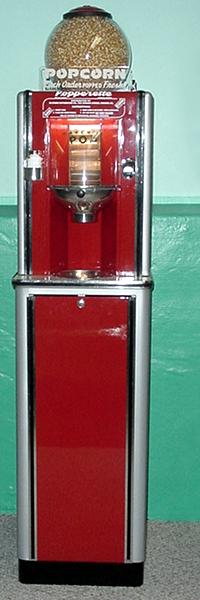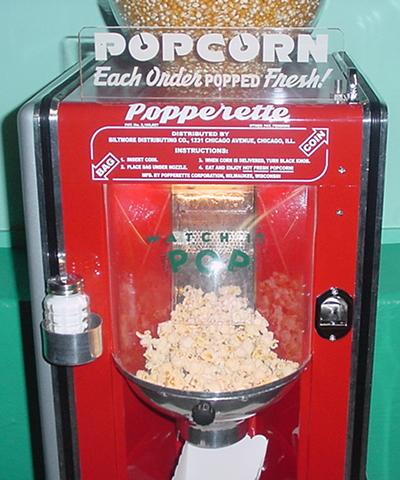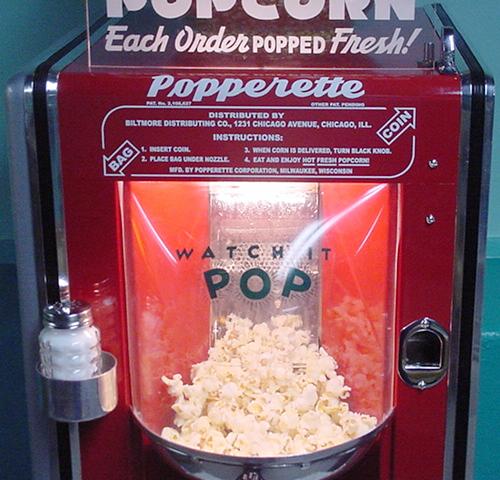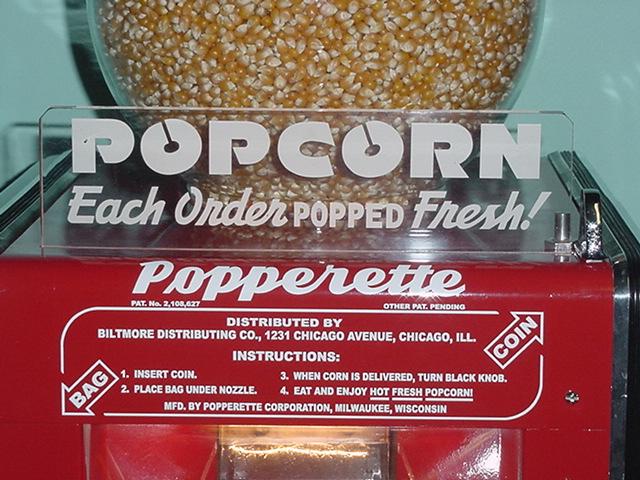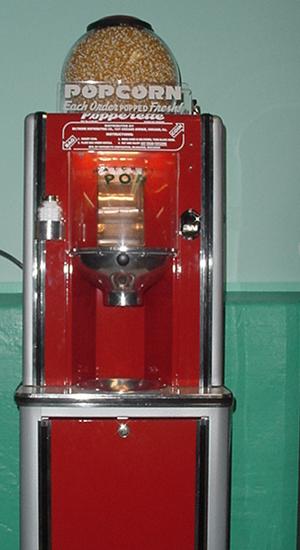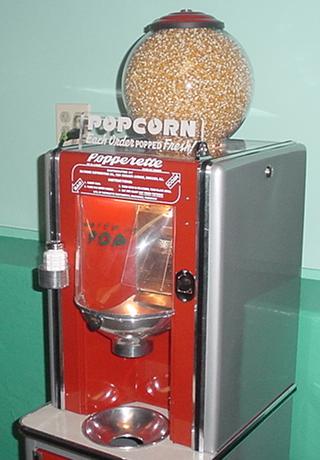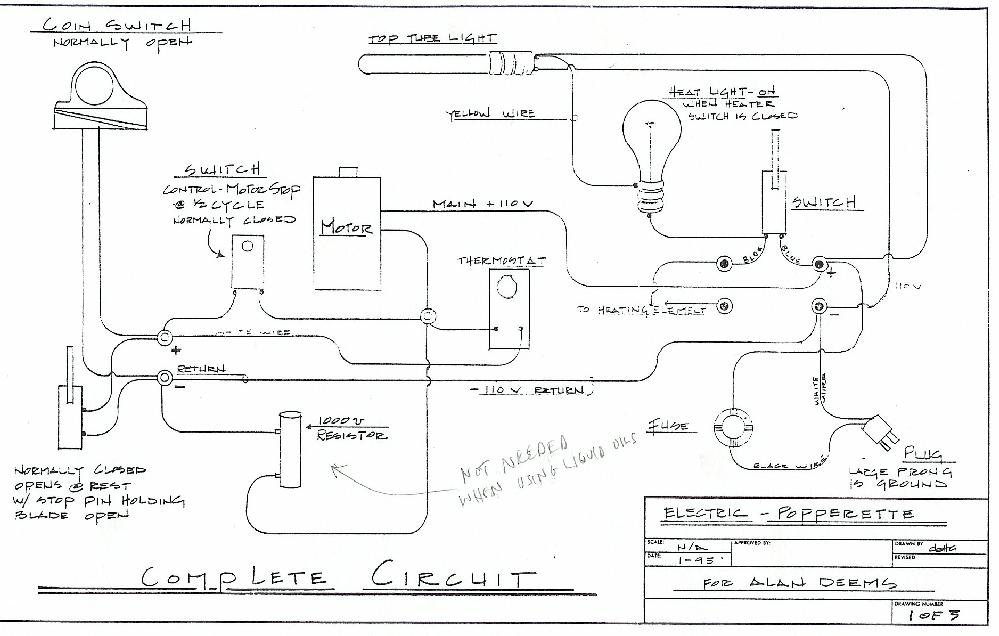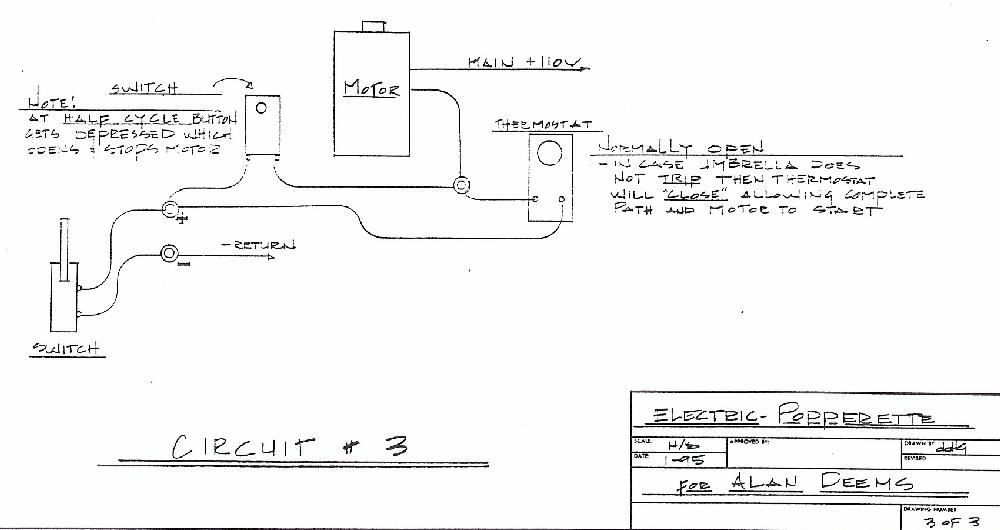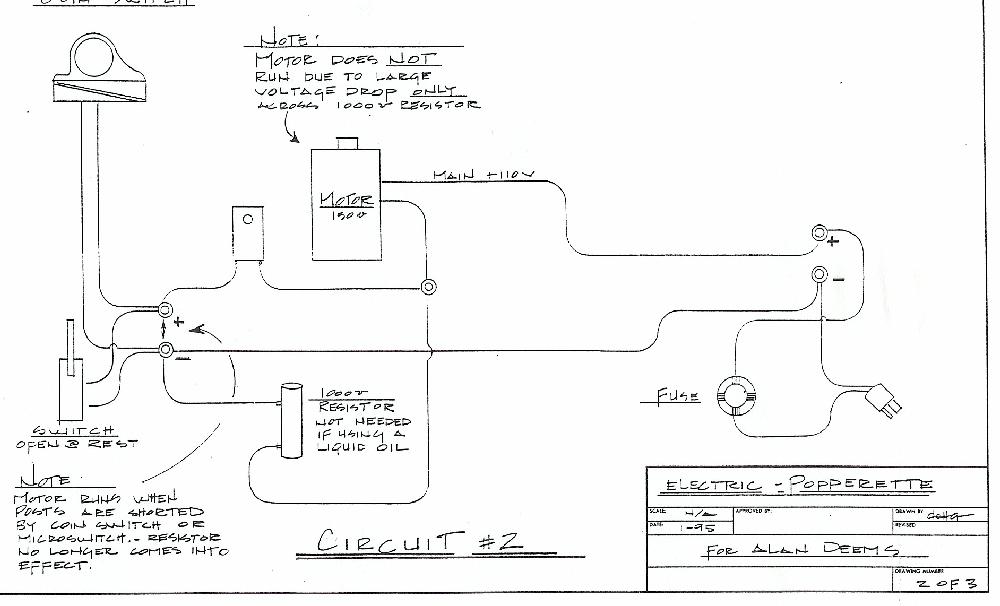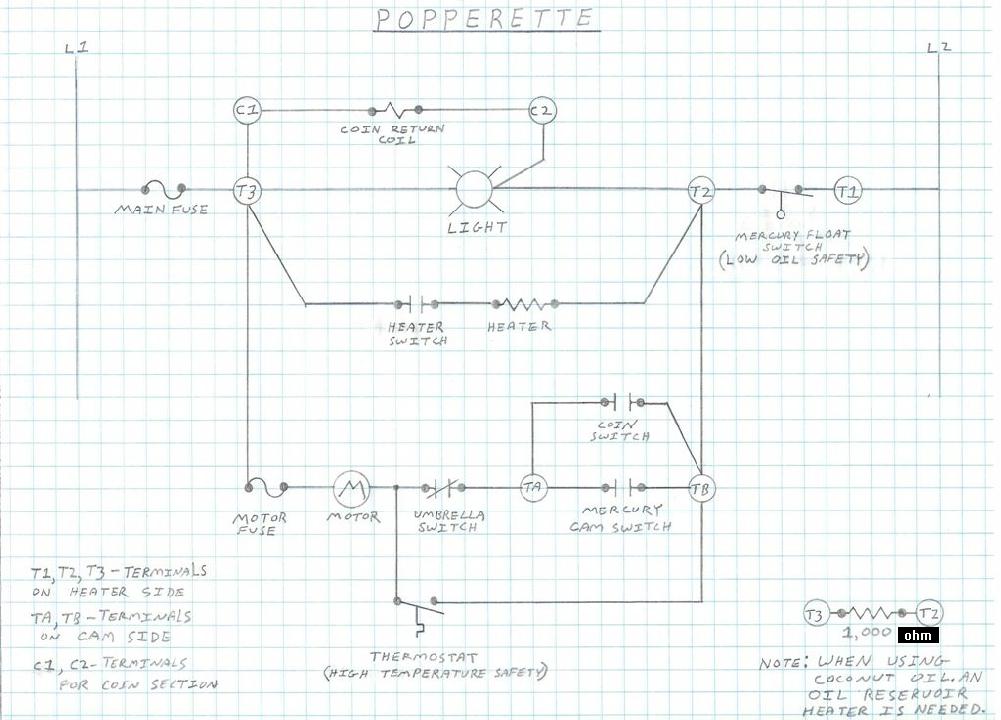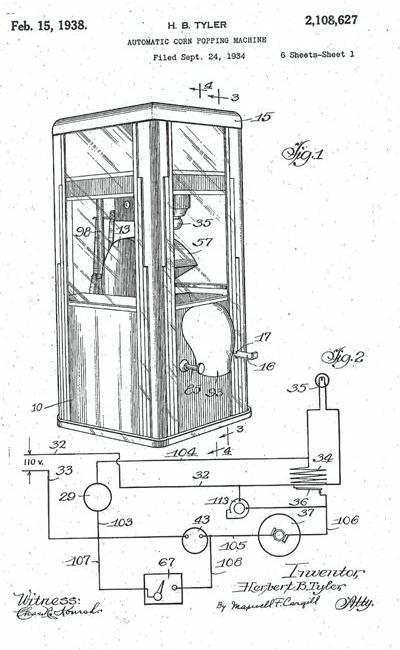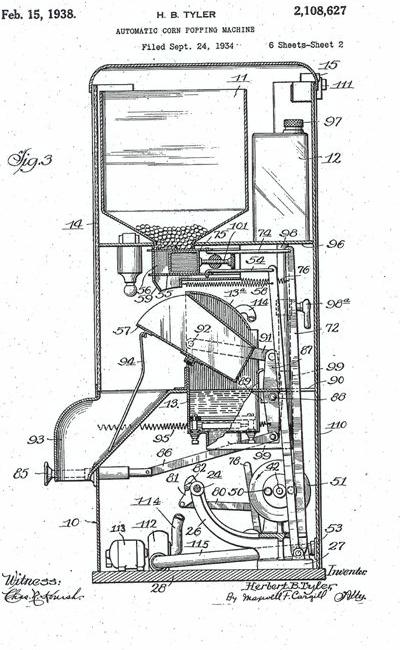Description: The Popperette coin operated popcorn machines from the mid 1940s to the mid 1950s provide not only great entertainment while popping an individual portion of popcorn, but fantastic, movie-theatre-quality tasting popcorn in just 1 minute. More info on other pop corn machines can be found here.
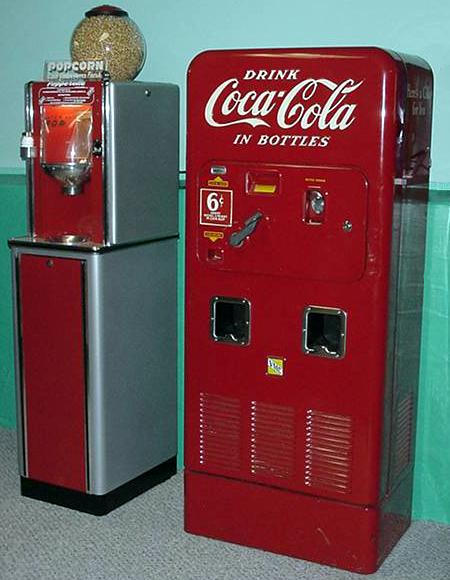
If you have a Popperette pop corn machine for sale, whole or parts, restored or unrestored, please contact me at cfh@provide.net
There are two styles of Popperettes. The first models used a mercury switch for motor operation and the later models used a relay. The only reason that I can see for the change, is that the nut holding the mercury switch could loosen up. This would cause the motor to stop in mid cycle, or not run at all.
This sequence of operations is for the first version of the Popperette with the mercury switch. The machine is plugged in. The light comes on, oil pan heater is on (if used), and the coin return (lockout) coil is energized. This coil allows the dime to go through the chute. Otherwise, when the coil is de-energized and a dime is deposited, the dime would be returned to you.
When you put a dime in, a lever prevents the dime from falling into the coin box. This keeps the coin switch closed, and allows the motor to come on.
The oil pump, which is attached and operated by the motor, starts pumping (before you start the machine, manually fill cooking chamber with oil!) and the cams start to spin.
The oil continues to pump into the cooking pan. Any excess oil will drain out of the cooking pan and into the large bottom reservoir pan where it will be pumped up back into the cooking pan, over, and over again. If the oil is a solid (coconut oil), a heater is needed to melt the solid oil before it will flow in the pump.
The cams spin and the lever that trapped the coin starts to move down. The large cam controls all of the operations except for the umbrella (the paddle inside the popping chamber). The small cam, behind the large gear, controls the umbrella.
The popping basket also starts to lower itself into the oil. As it is lowered the heater is turned on by a lever that is attached to that same rod that moved the coin lever, and basket. The coin falls through. (The motor continues to run because the cam mercury switch has turned and the mercury in the switch completes the circuit to keep the motor spinning).
The large cam then flips various levers and it closes the front door. The first lever opens a trap door and popcorn falls into the pan. (Before your first batch is made, you should manually fill the trap door by turning the second lever). Then the large cam trips the second lever. This lever drops popcorn, from the globe, into an individual serving container for the next batch of popcorn.
The umbrella lowers and the motor and pump stop (When the umbrella is lowered, a bronze weight opens the umbrella switch. This stops the motor).
The heater remains energized and the popcorn cooks. A minute later the popcorn starts to pop. When enough popcorn pops in the chamber, the popcorn pushes up the umbrella. This moves the bronze weight, which closes the umbrella switch and starts the motor. The small cam rotates and the umbrella lifts up. The large cam also is rotating and the cooking pan rises slightly to drain any excess oil.
If there wasn’t enough popcorn to lift the umbrella, the heater will stay energized and the heat in the chamber will continue to increase until the safety thermostats contacts close. These contacts start the motor and pump. The unit will continue as normal. Usually if this happens, your house is already pretty smoky.
When the large cam makes its complete cycle, the front door opens. Then the cooking basket springs forward, releasing the popcorn into the front funneled pan. The mercury cam switch opens, because the switch is tilted, and the motor and pump stop.
Put your bag under the funnel, move the black knob, fill the bag, salt, and enjoy!
One other note is that there is a cork float that attaches to a mercury switch. This is the low oil cut off safety. Usually, the float is missing. It is used to disrupt the power to the machine incase the reservoir is near empty. I removed mine, because I monitor the oil in the pan before and during operations.
